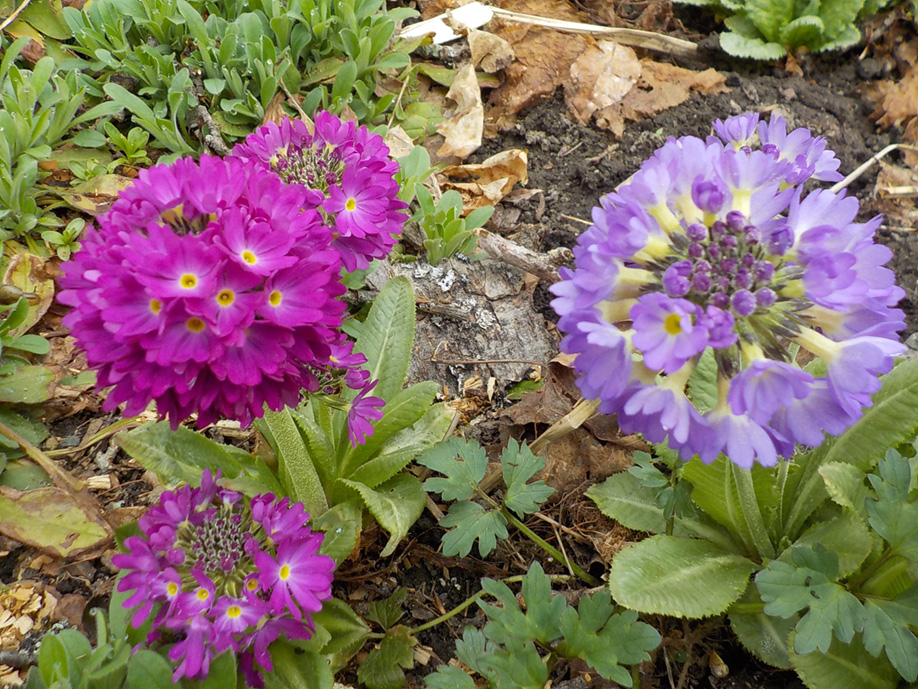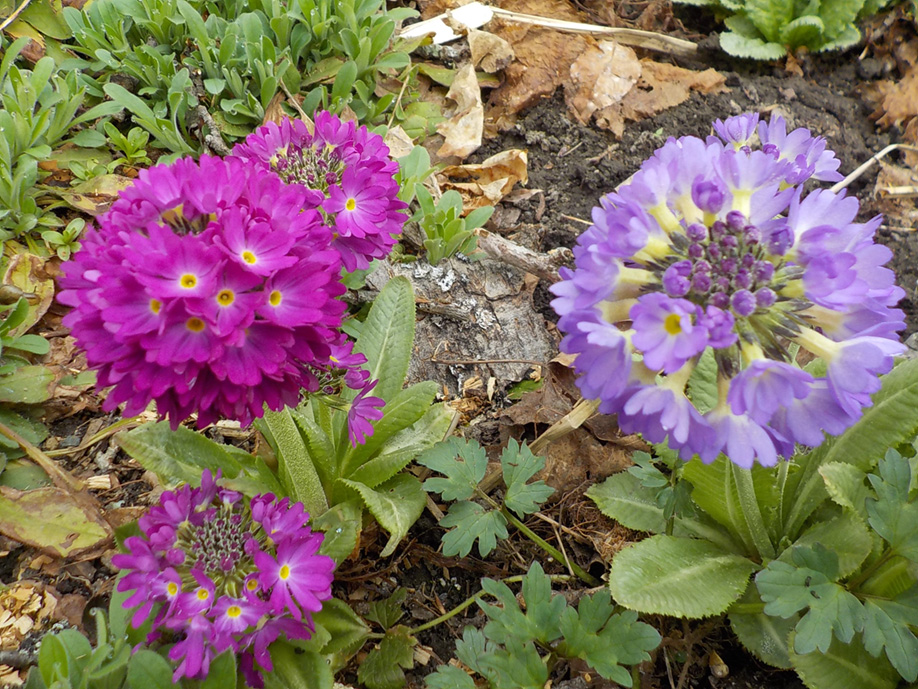
courtesy photo
Drumstick primroses.
by Henry Homeyer
CORNISH FLAT, N.H. – I like to have blossoms in the garden and in vases everywhere. I try to have something blooming all the time or as often as possible. Right now, in mid-April, I count more than 10 species of plants in bloom, along with seven species of bulb plants which are blooming by the hundred for me.
Let’s start with trees and shrubs, what I call woodies. The most unusual woody is leatherwood (Dirca palustris). This is a native woodland plant that does well in part shade. Although the literature says it prefers moist, rich soil, I have it in dry soil and it does well there.
Leatherwood has small greenish-yellow flowers that appear about the same time as forsythia: mid-April for me. Mine is slow growing with lovely gray bark that reminds me of beeches. This is a well-mannered, slow growing plant that stays three- to six-feet tall and wide.
February Daphne (Daphne mezereum) is in bloom now with highly fragrant pinky-purple flowers. It is originally from Europe, Turkey and Iran. I love it so much I named a corgi after it (she is now gone, alas). It stays three- to five-feet tall and wide. In the fall it produces small red berries.
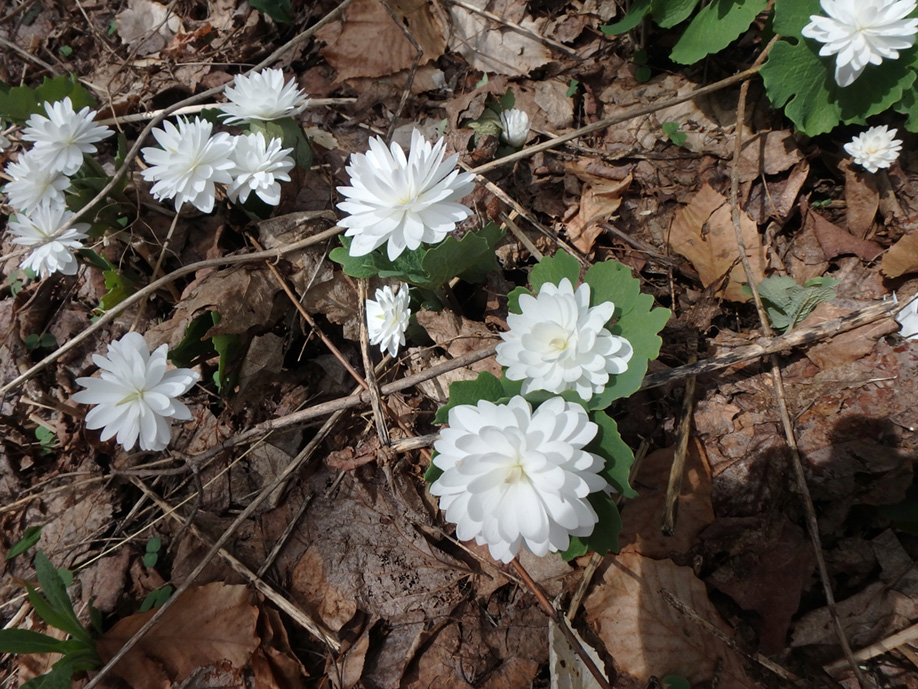
courtesy photo
Double bloodroot is rare, not usually found in the wild, but is sold in specialty nurseries.
Magnolias are in bloom now, too. My favorite is the Merrill magnolia, a hybrid which produces double white, lightly fragrant flowers. I planted mine as a small tree in 2004, and now, 19 years later, it is about 40 feet tall with a spread of 25 feet. It blooms reliably (nine years out of ten) on my birthday, April 23. It is a good specimen tree to put in a lawn, and will do well even if the soil is consistently moist to soggy.
These magnolias come as both single-stem and multi-stem trees, but most are multi-stemmed, as mine is. However, when the stems get big they grow together at their base. Sometimes the included bark rots and weakens the stems, making them susceptible to splitting. I removed one big stem on mine two years ago and the tree has recovered.
Forsythias are in bloom everywhere with bright yellow flowers. If yours only blooms down low, in the area covered by snow, the buds which were formed last summer were killed by the winter cold. So get rid of it and buy a new variety such as New Hampshire Gold, Vermont Gold or Meadowlark. All are hardy throughout New England.
My favorite early spring perennial is called the drumstick primrose (Primula denticulata). It comes with flowers in purple, blue, pink, magenta and white. The florets are small and arranged in two- to three-inch globes on six-inch stems. They do best in moist to wet soil in sun or partial shade.
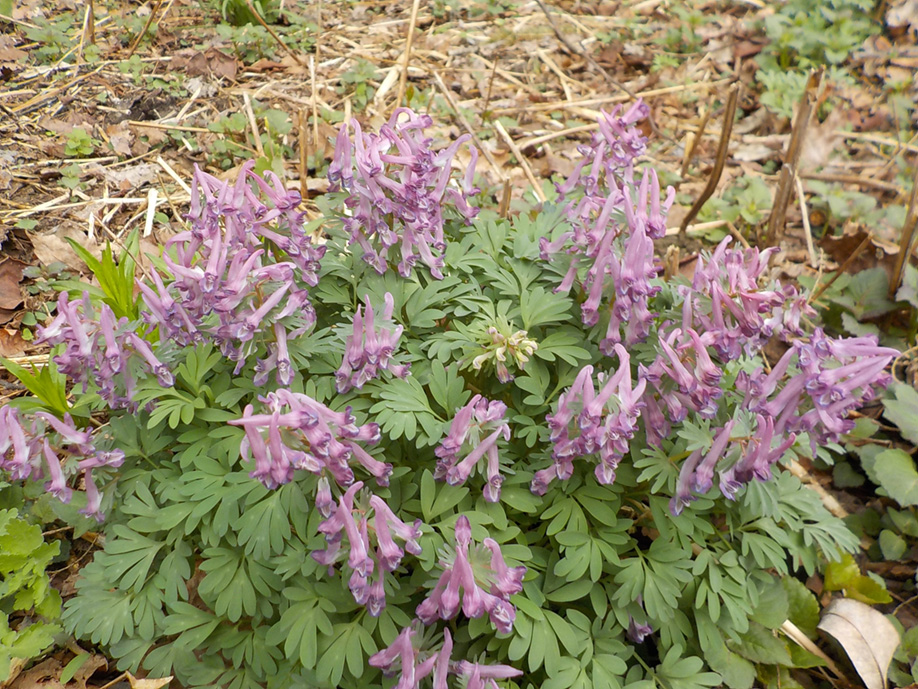
courtesy photo
Corydalis solida.
Hellebores or Lenten Roses (Helleborus orientalis) are also wonderful spring flowers. Mine have been blooming for a couple of weeks already and will continue on for another month or so. The blossoms are five-petaled and two- to three-inches wide with yellow stamens in the center. Colors range from white and cream to pink, purple and nearly black. They are evergreen, but last year’s leaves should be cut off now as they are all bedraggled.
A dainty flower with beautiful finely-cut foliage is a spring ephemeral called corydalis or fumewort (Corydalis solida). It pops up in my garden where it wishes, and I am always glad to welcome it. It seems to do best in moist, part shade with rich soil. The flowers on mine are small, long-spurred light blue, but other colors are also possible. There is a yellow variety of a related species (C. lutea).
Lungwort or pulmonaria (Pulmonaria spp.) is a good ground cover that is blooming for me now, too. It is interesting that a single stem might support blue, pink or apricot flowers all at once. All do well in shade or partial shade and better in moist soils than dry soils. It spreads by root.
There are at least a dozen different species of pulmonaria including P. longifolia with spotted leaves and multicolored blossoms. The one I like best is P. angustifolia which has very intense blue flowers and solid green leaves. I’ve read that varieties or species with more white spots grow better in full sun than those with fewer or no spots.
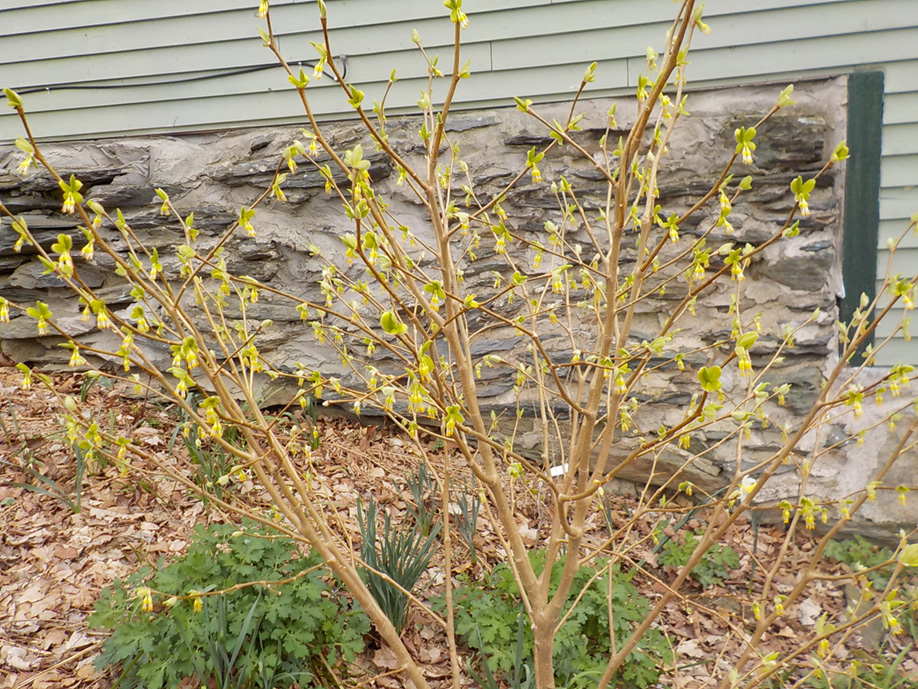
courtesy photo
Leatherwood.
Wildflowers are starting to bloom, including one of my favorites, bloodroot (Sanguinaria canadensis). These white multi-petaled flowers come up from the soil wrapped in the leaves that look like a green cigar. In cold days, or at night, the blossoms close up but open on sunny days when the bumblebees are working.
The bloom season of bloodroot is short, but there is double bloodroot which is sterile and blooms for a longer time. Like all bloodroots, the clumps get bigger every year, so you can dig them up and divide them to start doubles in new places. The sap from the roots is poisonous, so wear gloves when dividing any bloodroots. Do that in now, or in the fall.
We certainly deserve spring blossoms for having survived winter and mud season. But you do have to plan and plant for those early bloomers.

